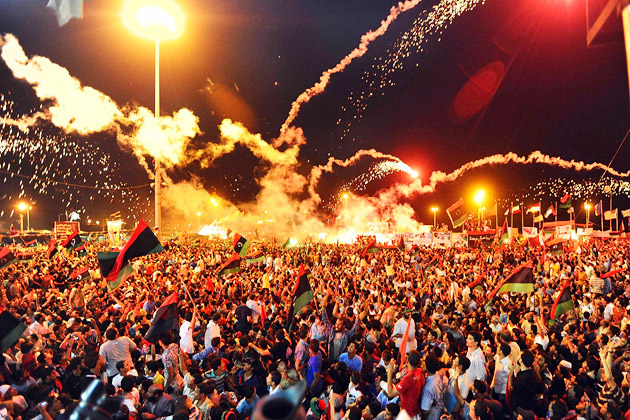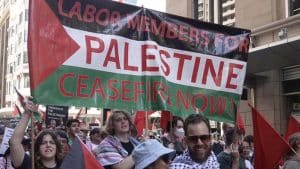Sidi Bouzid is a small, isolated town located in the center of Tunisia, 100 km from the sea and 200 km from the capital, Tunis. Forty thousand people travel to and from Sidi and the capital every day. It is an isolated village in an agricultural region dominated by olive cultivation. However, five years ago, a tragic story was written in this small village, whose effects would shock the Arab world substantially: the self-immolation of 26-year-old Mohamed Bouazizi.
After the early death of his father, Bouazizi tried to feed himself and his five siblings by selling vegetables on the street. For years, the police repeatedly harassed him, confiscated his goods, and fined him for lacking permits. On December 17, 2010, it was said that a municipal official publicly humiliated the street vendor. He was beaten and thrown to the ground. The official and her aides confiscated his weighing scales and destroyed his produce cart. Bouazizi went to city council, demanding to speak with authorities, but he was refused an audience.
The helplessness and fury he felt at that moment was familiar to an entire generation of young Tunisians: despite obtaining high levels of education, there were no promises of a future. The people were overwhelmed by the high costs of living, and faced constant harassment from police. But that day, the despair was too much for Bouazizi to bear. In front of the municipal building, he drenched himself with a can of gasoline. A small flame from his lighter was enough to set himself on fire–and within a few months, the entire Arab world would follow.
The Spread of Unrest
News of Bouazizi’s tragic act spread quickly. Immediately, hundreds of youth filled the streets of the small town in indignation. In the days that followed, people came together spontaneously through Facebook and Twitter to launch more protests, which soon spread to the entire country. The term “Facebook Revolution” emerged, spreading widely through Western media. However, the catchphrase did little to reveal the long- root causes of the movement. As a result of drought and global economic crisis, market prices for corn doubled in the period from June 2010 to January 2011. High levels of unemployment, lack of democratic freedoms, and high cost of food culminated in an explosive social environment, which led to the tragic death of Mohamed Bouazizi on January 4, 2011 after two and a half weeks in a coma.
For too long, the people of Tunisia were held in chains. But their courage had grown to be stronger than the resignation and fear of President Zine El Abidine Ben Ali’s henchmen. Despite the ensuing rolling-out of repressive forces, the people’s resistance grew. In early January, protests gained a mass character and in some instances, took the form of direct attacks on police and government facilities. Police responded with deadly fire.
On January 10, labor union Générale Tunisienne du Travail called for a general strike. Publicly, President Ben Ali labeled the protesters “terrorists” and criminals. What he failed to mention was that he was already preparing his escape, sequestering more than $20 billion and sending it out of the country. On January 14, the government declared a state of emergency. Ben Ali left Tunisia in the direction of Saudi Arabia. By that time, the police had killed 78 civilians during demonstrations. The force of the mass protests had caught Ben Ali off-guard. Despite his control of an extensive repressive apparatus, he could no longer prop up the kleptocratic system that he built during the course of more than two decades. Even his close relationship to France couldn’t help him.
The Arab Spring
Encouraged by these heroic actions, people in other countries in North Africa and the Middle East came out with slogans of rebellion: For social justice and democratic freedoms! Down with the hated dictators and bloodhounds! After so many years of intimidation and suffering, overnight, the spirit of the revolution took ahold of the streets of Tunis, Cairo, Benghazi, and Sana’a. In January and February, millions crowded the streets of big cities in almost every Arab country.
In Egypt, the first mass protests began on January 25. Various opposition groups called for a “Day of Revolt”–against torture, poverty, corruption, and unemployment. But for the hooligans of the state, there was nothing to celebrate: thirty thousand uniformed officers attempted to disperse the massive crowd of tens of thousands, but were forced to withdraw. In the following days, the situation escalated. Dozens of people died in protests and the army had a heavy presence in public spaces everywhere. Protesters occupied Tahrir Square in central Cairo, defending it against Mubarak’s thugs, who were sometimes mounted on camels and violently attacked protesters.
Women were front and center, making up nearly half the demonstrators. Those who were defying the patriarchal structures in Egypt were at Tahrir Square, fighting alongside men as equals. In the years before, the women had shown strength in labor disputes. Since 2006, there were frequent strikes and occupations of textile factories, such as the state-run industrial textile factory complex, El-Mahalla on the Nile Delta. A large proportion of workers who were poorly paid by Western companies were women.
Since the 2011 revolution, Egyptian workers have gained special attention. Nationwide strikes in essential sectors such as education, health, textile production, transportation, and ports have shocked the bourgeoisie again and again. While the old corrupt and government-affiliated union lost influence, a new “Federation of Independent Trade Unions of Egypt” was formed, with more than two million members.
It was also to the merit of these militant women and workers that Mubarak was forced to abdicate on February 11, 2011. Hundreds lost their lives while fighting at Tahrir Square. However, after Tunisia, within a few weeks, the resistance movement succeeded for the second time, to overthrow a dictator. And again, the dictator’s friends, this time in Washington, couldn’t save him. However, as in Tunisia, questions remained after Mubarak’s fall.
The Tides Turn
The bloody yet rapid fall of the two dictators left an opening that became a shark pool in the struggle for power. In Tunisia, a transitional government of “national unity” was formed. Although the president had been chased away, the old elites remained in the corridors of power. Thus, protests continued, demanding to expel Ben Ali’s cronies.
Here, however, the limits of the movement appeared. There were no factory councils that could forge an independent path for the working class under revolutionary leadership. Instead, the movement became subordinated to bourgeois forces. The Islamist Ennahda party won the elections in held in late 2011. There followed a period of political and economic instability. The subordination and dependence on French imperialism remained, as did the pressure on wages and working conditions of Tunisian workers, threatened with the withdrawal of capital investments.
During the overthrow of the old regime, the workers played a central role with their strikes. But in the new system, they were been pacified by the elections. The leadership of the trade union movement supported this process because they wanted to preserve their privileges in negotiations with the representatives of the new regime. In effect, the UGTT trade union played the role of mediator between the ruling party and opposition party in February 2013 to initiate a “national dialogue.” The government ruling today is a combination of bourgeois secular parties, old elites, and moderate Islamist forces. Piece by piece, the new regime sold off the already-limited democratic gains of the revolution, secured impunity for former functionaries of the Ben Ali regime, and implemented police-state measures.
In Egypt, the generals took over power in Mubarak’s absence. When the troops occupied the public spaces during Mubarak’s overthrow, the crowds chanted, “The army and people are united.” But the newly formed military council with its chairman, Field Marshal Mohamed Hussein Tantawi, had plans of its own and held up the 30-year-long state of emergency, breaking their commitments.
Again, there was no revolutionary force that could break the illusions that the masses harbored for the military. In the following elections, similar to what took place in Tunisia, the Islamist Muslim Brotherhood won, with Mohammed Mursi at the top. But they were not able to solve the social issues. Instead, they carried out the austerity measures of the International Monetary Fund (IMF) and cut subsidies on fuel and basic goods. The resurgence of the mass protests in June 2013 took the army for a coup under benevolence of Germany, the EU and the especially the USA. In the aftermath, the military organized a massacre of more than 1,000 dead in the eviction of a protest camp of the Muslim Brotherhood. Thus the current regime doesn’t stand behind the old Mubarak clan according to bestiality.
Meanwhile, Libyan leader Muammar Gaddafi did not hesitate to act in the wake of the fall of his counterparts in neighboring countries. In February, protests in Libya assumed a mass character. Instantly, Gaddafi hired armed mercenary gangs, advanced with tanks and tried to drown out the revolt in blood. A civil war quickly developed, in which sectors of the old elites joined the insurgents. The ephemeral dream of freedom and justice collided with the boundaries of the resistance movement, which was too weak to overthrow Gaddafi. His forces were too strong, and he preferred slaughter to concessions. But this new scenario caught the attention of military strategists in Washington, Paris and London; Gaddafi had been tended to be pro-Russian. The West had indeed come to terms with him, but it was never a great love. With the outbreak of the armed struggle for power, emerged the opportunity for France, Great Britain and the USA to get rid of him, bring the Libyan oil reserves under control, and improve their geo-political position in North Africa.
The media made the air strikes that followed look like actions to support a democratic movement. Actually, Gaddafi was captured and killed, but the protest movement could not maintain independence. During his regime, the organizations of the workers were organically linked to the state. Gaddafi maintained this connection through social programs, which were weakened over time by the increased corruption of the bureaucracy and the economic crisis. As in Egypt, since the workers did not succeed in building a collective, independent trade union movement, it was nearly impossible to them at the beginning of the mass demonstrations to go be organized on the streets. Instead, renegade officers, local bands and tribal clans gained influence. The rapid militarization of the conflict and support from NATO were playing into their hands. To this day, rival groups are fighting for hegemony and governmental order exists only in some parts of the country.
With the NATO operation began a new stage: the Arab Spring had become militarized, in Libya, and especially in Syria. In the second part of this article, we will continue with a discussion on how this situation evolved and what political perspectives are materializing today.
Translated by Marius Maier










